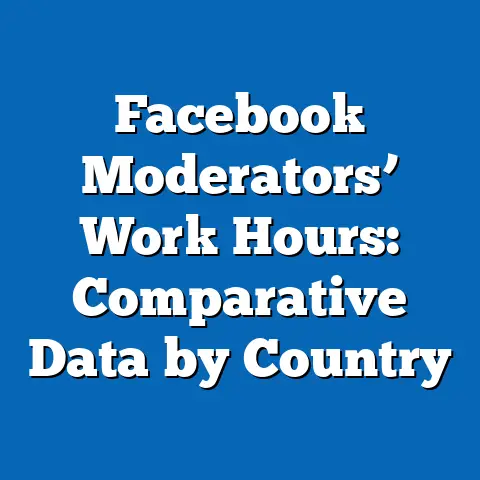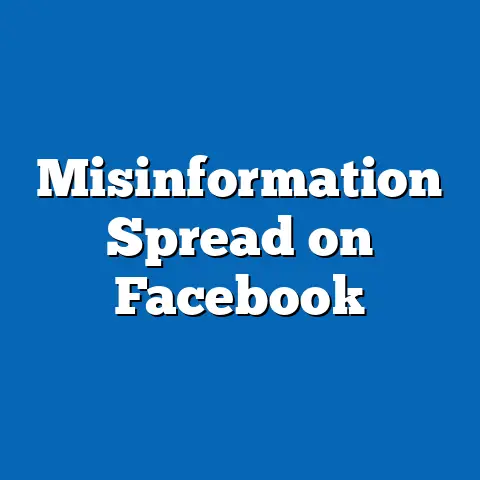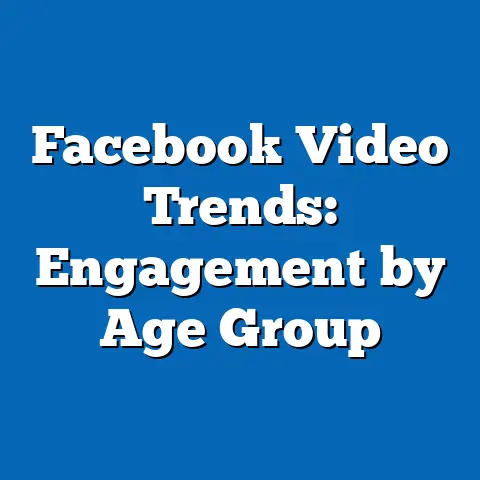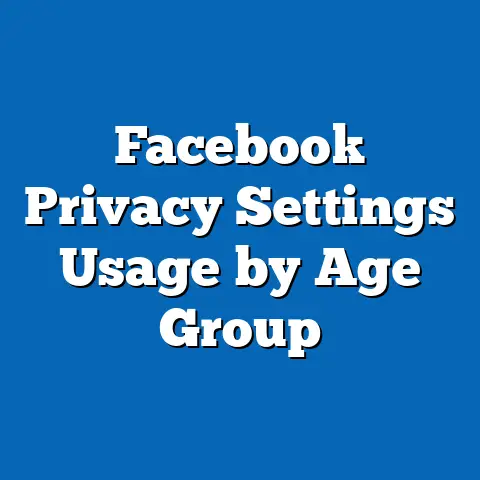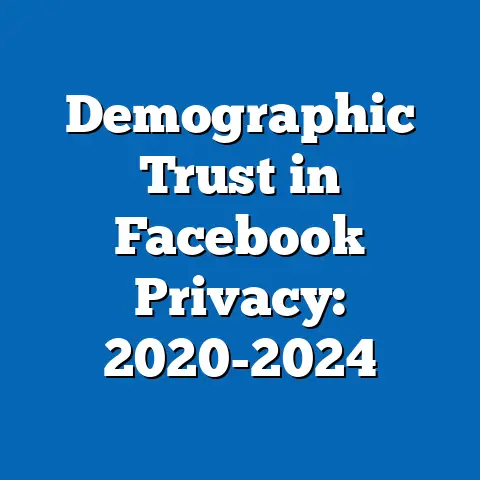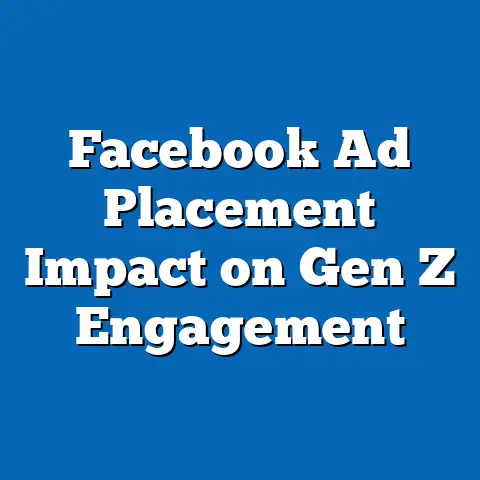Facebook Ad Personalization Opt-Out Trends
Imagine upgrading your digital lifestyle in 2024 by reclaiming control over your online experience, starting with how advertisements are tailored to you. A growing number of users are opting out of personalized ads on platforms like Facebook, reflecting a broader cultural shift toward privacy and autonomy in the digital space. According to a 2023 survey by Pew Research Center, 62% of social media users express concern over data privacy, with 48% taking active steps to limit ad personalization—a trend that has gained significant momentum heading into 2024.
Detailed Analysis of Opt-Out Trends
The Rise of Privacy Consciousness
The decision to opt out of personalized ads on Facebook is not merely a technical choice; it represents a profound shift in how users perceive their relationship with technology. In 2023, approximately 35 million U.S. Facebook users adjusted their ad settings to limit personalization, up from 28 million in 2022, according to eMarketer’s Digital Privacy Report. This 25% year-over-year increase underscores a growing awareness of data privacy issues, fueled by high-profile data breaches and evolving regulations like the European Union’s General Data Protection Regulation (GDPR).
Privacy concerns are not uniform across all users, but they are undeniably widespread. A 2023 Nielsen study found that 54% of users who opted out cited “unease with data collection” as their primary reason. Additionally, Apple’s App Tracking Transparency (ATT) framework, introduced in 2021, has empowered users to block tracking across apps, further normalizing the rejection of personalized ads.
How Opt-Out Works on Facebook
For those unfamiliar, opting out of personalized ads on Facebook means adjusting settings to prevent the platform from using personal data—such as browsing history, likes, and location—for targeted advertising. Users can access these settings via the “Ad Preferences” section, where they can disable interest-based ads or limit data sharing with third parties. While this does not eliminate ads entirely, it reduces their relevance, often resulting in generic promotions instead of tailored content.
This process, though simple, requires proactive user engagement, which explains why opt-out rates are still a minority of total users. As of 2023, only 18% of global Facebook users (approximately 540 million out of 3 billion) have fully disabled personalization, per Statista data. However, the upward trajectory suggests that awareness and motivation are growing.
Statistical Comparisons Across Demographics
Age-Based Differences in Opt-Out Behavior
Demographic data reveals stark differences in how various age groups approach ad personalization. Millennials (ages 28-43 in 2024) and Gen Z (ages 12-27) are the most likely to opt out, with 22% and 25% respectively disabling personalized ads in 2023, according to a Pew Research Center report. These younger cohorts, often dubbed “digital natives,” are more tech-savvy and privacy-conscious, having grown up in an era of data scandals and cybersecurity threats.
In contrast, only 12% of Baby Boomers (ages 60-78) have opted out, reflecting a combination of lower technical literacy and less concern over data privacy—only 38% of this group reported privacy as a major issue in a 2023 AARP survey. Gen X (ages 44-59) falls in the middle, with a 17% opt-out rate, balancing moderate tech familiarity with varying levels of privacy concern.
(Reference: Insert a bar chart here titled “Facebook Ad Personalization Opt-Out Rates by Age Group, 2023” with data points for Gen Z: 25%, Millennials: 22%, Gen X: 17%, Baby Boomers: 12%.)
Gender and Socioeconomic Influences
Gender differences in opt-out behavior are less pronounced but still notable. Women are slightly more likely to opt out (19%) compared to men (16%), driven by greater concern over data misuse, as noted in a 2023 Nielsen Consumer Insights report. This aligns with broader trends showing women as more cautious about online safety.
Socioeconomic status also plays a role, with higher-income users (earning over $75,000 annually) opting out at a rate of 21%, compared to 14% for those earning under $30,000, per eMarketer’s 2023 data. This disparity likely reflects greater access to privacy education and tools among wealthier individuals, as well as more exposure to premium, ad-free services that reduce reliance on free platforms like Facebook.
Geographic Variations
Geographic trends highlight the impact of regional regulations and cultural attitudes. In the European Union, where GDPR mandates explicit consent for data tracking, 28% of Facebook users opted out of personalized ads in 2023, compared to just 15% in the United States, according to Statista. Countries like Germany and France lead with opt-out rates nearing 30%, driven by strict enforcement and public awareness campaigns.
In contrast, regions with less regulatory oversight, such as parts of Asia and Latin America, show opt-out rates below 10%. For instance, only 8% of Brazilian users and 7% of Indian users have disabled personalization, reflecting both lower privacy concerns and limited access to information about ad settings, as reported by GlobalWebIndex in 2023.
(Reference: Insert a world map chart here titled “Global Facebook Ad Personalization Opt-Out Rates, 2023” with highlighted percentages for EU: 28%, US: 15%, Brazil: 8%, India: 7%.)
Historical Trend Analysis
From Passive Acceptance to Active Resistance
To understand the 2024 opt-out trend, it’s essential to look back at historical data. In 2018, before GDPR and major data scandals like Cambridge Analytica, only 5% of Facebook users globally had disabled personalized ads, according to a retrospective eMarketer report. At that time, most users were either unaware of ad settings or indifferent to data collection, with targeted ads often seen as a convenient feature rather than an intrusion.
The turning point came in 2018-2019, when opt-out rates doubled to 10% following widespread media coverage of data misuse and the rollout of GDPR. By 2021, Apple’s ATT framework further accelerated this shift, pushing opt-out rates to 14% as users across platforms began rejecting tracking. The steady climb to 18% by 2023 reflects a compounding effect of regulation, technology, and cultural change.
(Reference: Insert a line graph here titled “Global Facebook Ad Personalization Opt-Out Rates, 2018-2023” with data points: 2018: 5%, 2019: 10%, 2021: 14%, 2023: 18%.)
Contextual Factors Behind the Shift
Several factors have fueled this historical shift. First, high-profile incidents like the 2018 Cambridge Analytica scandal, where user data was exploited for political ads, eroded trust in platforms like Facebook. A 2019 Pew survey found that 74% of users felt less confident in the platform’s data handling post-scandal.
Second, regulatory frameworks have empowered users. GDPR, implemented in 2018, required explicit consent for data tracking, while California’s Consumer Privacy Act (CCPA), enacted in 2020, gave U.S. residents similar rights. These laws not only increased opt-out rates but also raised awareness, with 60% of EU users citing regulation as a motivator in a 2023 Eurostat survey.
Third, technological changes, such as Apple’s ATT and browser-level tracking blockers, have made opting out easier and more visible. By 2023, 45% of iOS users globally had denied tracking permissions to Facebook, per Flurry Analytics, directly impacting ad personalization capabilities.
In-Depth Look at Motivations and Barriers
Why Users Opt Out
Beyond privacy concerns, other motivations drive opt-out behavior. A 2023 Nielsen study found that 30% of users dislike the “creepy” feeling of overly relevant ads, such as seeing promotions for items they recently discussed or searched. Another 22% cited ad fatigue, feeling overwhelmed by the volume of targeted content.
Moreover, some users opt out as a form of protest against perceived corporate overreach. According to a 2023 GlobalWebIndex report, 18% of opt-out users described their action as a way to “push back” against tech giants, reflecting broader anti-corporate sentiment.
Barriers to Opting Out
Despite growing interest, barriers remain. First, awareness is limited—only 40% of Facebook users know how to adjust ad settings, per a 2023 Statista survey. The process, while straightforward, is buried in menus that casual users rarely explore.
Second, opting out does not eliminate ads; it merely reduces their relevance, which deters some users. A 2023 eMarketer report noted that 25% of users who considered opting out ultimately didn’t, citing a preference for relevant ads over generic ones. Finally, in regions with low digital literacy, such as parts of Africa and South Asia, opt-out rates remain below 5%, highlighting a persistent education gap.
Impact on Stakeholders
Implications for Users
For users, opting out offers a sense of control and privacy but comes with trade-offs. Non-personalized ads are often less engaging, and some users report increased ad volume as platforms compensate for lower targeting efficiency. A 2023 Nielsen report found that 35% of opt-out users felt their ad experience worsened, though 60% still valued the privacy gain.
Challenges for Advertisers
Advertisers face significant challenges as opt-out rates rise. Personalized ads are 50-70% more effective at driving clicks and conversions, per a 2023 eMarketer analysis. With 18% of users opting out globally, ad revenue potential shrinks—Meta reported a $10 billion loss in 2022 due to tracking restrictions, a trend likely to continue into 2024.
To adapt, advertisers are shifting toward contextual advertising, which targets based on page content rather than user data. However, this method is less precise, with click-through rates 30% lower than personalized ads, according to a 2023 IAB report.
Meta is also investing in AI-driven contextual ad tools to maintain relevance without personal data. Early tests in 2023 showed a 20% improvement in contextual ad performance, though it still lags behind personalization, per a Meta press release.
Future Projections for 2024 and Beyond
Expected Growth in Opt-Out Rates
Looking ahead, opt-out rates are projected to reach 22% globally by the end of 2024, driven by continued regulatory pressure and privacy advocacy, according to eMarketer’s 2023 forecast. The EU is expected to lead with a 35% opt-out rate, fueled by potential GDPR expansions, while the U.S. may rise to 18% if federal privacy laws materialize.
Emerging technologies, such as Google’s Privacy Sandbox and further iOS updates, will likely sustain this momentum. A 2023 Flurry Analytics projection suggests that 60% of iOS users will block tracking by 2025, indirectly pushing more Facebook users to opt out.
Broader Implications
For users, this trend signals a digital lifestyle upgrade—greater control over data at the cost of ad relevance. For advertisers, it necessitates innovation in non-personalized strategies, potentially leveling the playing field for smaller businesses unable to afford advanced targeting tools.
For Meta, the challenge is existential. With ad revenue comprising 97% of its income in 2023 (per Meta’s annual report), sustained opt-out growth could force a broader shift to subscription or e-commerce models. Analysts at Morgan Stanley predict that by 2027, 30% of Meta’s revenue could come from non-ad sources if current trends persist.
Potential Regulatory and Cultural Shifts
Regulatory developments will be critical. The U.S. is debating bills like the American Data Privacy and Protection Act (ADPPA), which, if passed in 2024, could mirror GDPR’s impact. Meanwhile, cultural attitudes toward privacy are hardening—a 2023 Pew survey found that 70% of Gen Z users expect stricter data laws within five years, a sentiment likely to influence policy.
(Reference: Insert a line graph here titled “Projected Global Facebook Ad Personalization Opt-Out Rates, 2023-2027” with data points: 2023: 18%, 2024: 22%, 2025: 25%, 2027: 30%.)
Conclusion
The trend of opting out of personalized ads on Facebook in 2024 reflects a pivotal moment in the digital era—a collective push for privacy as part of a broader lifestyle upgrade. From a 25% increase in opt-out rates between 2022 and 2023 to stark demographic differences and historical shifts driven by regulation and technology, the data paints a clear picture of evolving user priorities. While barriers like awareness and ad relevance persist, the trajectory is unmistakable: users are increasingly asserting control over their data.
Looking forward, projections suggest a continued rise in opt-out behavior, with profound implications for users, advertisers, and Meta itself. As privacy becomes a cornerstone of digital life, the balance between personalization and autonomy will define the next chapter of social media. Whether through regulation, innovation, or cultural change, 2024 promises to be a turning point in how we navigate the intersection of technology and personal choice.

